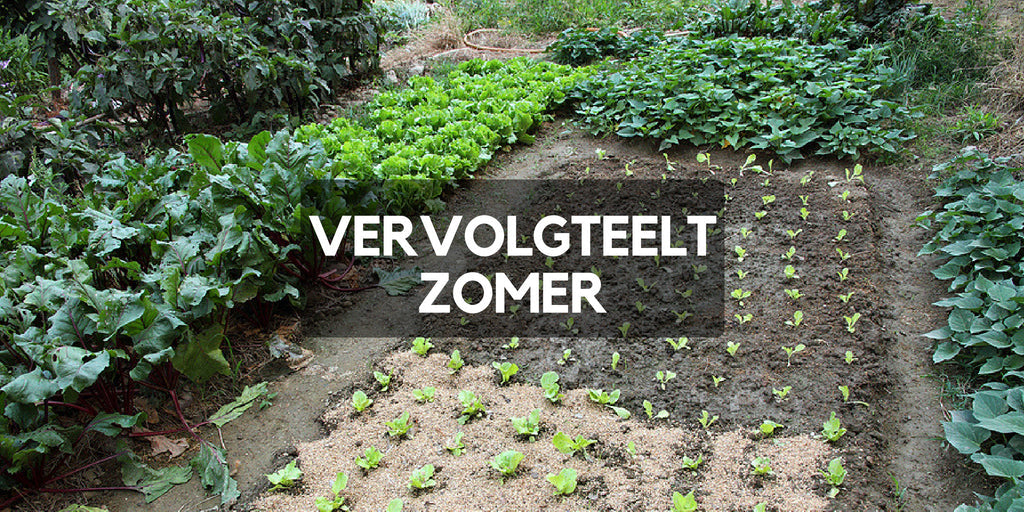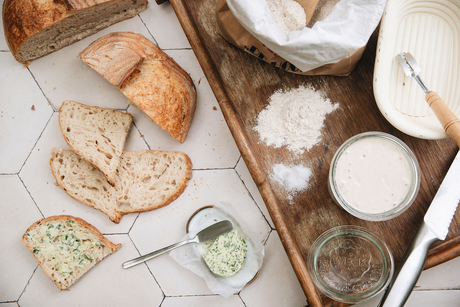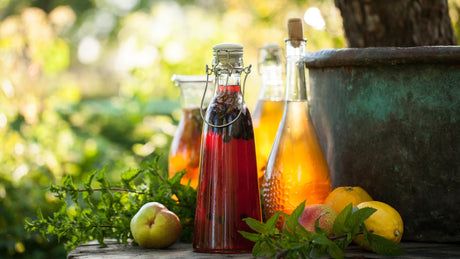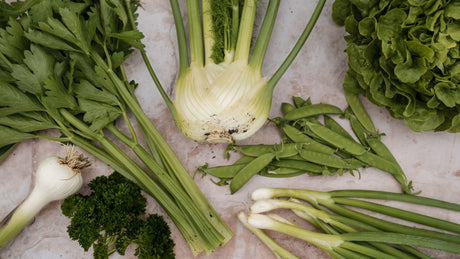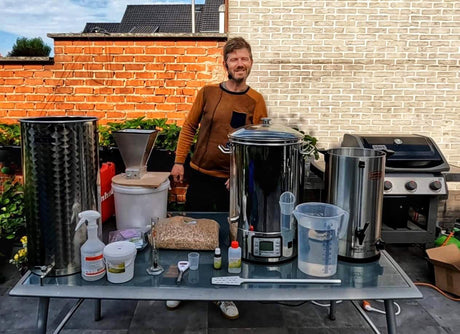Vegetable garden follow-up crop and mid-summer, fill up the empty beds again
Introduction
Actually, I should have written this message about vegetable garden follow-up cultivation in May, then you could still sow things to fill the vacant spaces now. But well, we'll see what is still possible now. Who knows, you might still be able to get hold of vegetable garden plants . This article is about filling the vacant spaces in the vegetable garden. The potatoes have been harvested, but it would be a shame to leave that spot exposed. The same goes for the spot where we planted the garlic, peas and lettuce (which would now bolt in full sun). From early spring to late autumn, the conditions in your vegetable garden are constantly changing. That's what makes it so fascinating. It is important for a vegetable gardener to understand these changes well. A major change is during mid-summer when your spring crops are ready to harvest and this frees up space to plant new seeds or new plants. In April and May, you can actually best prepare for the follow-up cultivation and in mid-summer. For example, you can pre-sow winter leeks , courgettes, kale or sprouts, which you can then immediately plant in July to replace a crop that you have harvested.
 When the leafy vegetables start to grow, you can still sow your winter carrots in that spot
When the leafy vegetables start to grow, you can still sow your winter carrots in that spotSoil preparation for subsequent cultivation
In the follow-up cultivation we will have to take the food requirements of the different crops into account very well. This is to avoid food shortages in your soil, food shortages that can cause your plants to grow poorly but can also cause your vegetables to become less resistant and fall prey to diseases. And there is another factor that you have to take into account in follow-up cultivation during the summer. Pieces of roots or side roots of alliums (onion-like plants), for example, can have a suffocating effect if you still want to sow princess beans, for example. The organic material of those allium roots is very interesting for growing leafy vegetables or later tomatoes
An overview of follow-up crops and for mid-summer
What to plant or sow after leafy vegetables
The first crops to lose their quality and eventually bolt are leafy vegetables. Think of your lettuce heads that are half a meter high and taste bitter when the weather gets warmer. Or the spinach that also takes off and bolts. These soon end up on the compost heap. You can still do a lot on the space that becomes available:
Sowing bush beans now saves a lot of freezer space
When you come back from your compost heap or chicken coop where you dumped all the bolted leafy greens, look for your bush bean seeds . In the warm soil they will germinate very quickly and provide you with a nice harvest of beans at the end of the summer. Ideal for freezing. I used to sow a lot of bush beans in May to harvest and freeze them from July onwards. By taking my storage beans from my follow-up crop , I put two months less strain on my freezer each year. I sow a small amount of bush princess beans in May to eat immediately and I now sow my storage crop in July.
Winter carrots or the place where your leafy vegetables were
In the soil where leafy vegetables have been harvested, you can also sow winter carrots perfectly. The top layer of the soil is depleted in nitrogen by the leafy vegetables, ideal for carrots that have to dive into the ground in search of food and water. Ideal My favorites are Berlikumer and Flakkeese . Both very good storage carrots that can remain in the ground for a long time. Read the growing guide: Growing carrots all year round in 5 steps.
Other vegetables that you can grow after the leafy vegetables
In addition to the vegetables mentioned earlier, you can also plant out the fast-growing fruit crops cucumber and courgette, plant out a young plant in July or you could also sow directly in June. If you have pre-grown or bought a sprout plant, you can also plant it in the place of your harvested leafy vegetables.
 After Garlic you can still sow and plant a lot
After Garlic you can still sow and plant a lotWhat else can you plant after garlic or onions?
Just like the leafy vegetables, the garlic is also ready to be taken out of the ground and two weeks later the onions and the shallots usually follow. You have a large choice of follow-up crops and in these beds. As long as you do not choose onions or beans , you can still sow or plant almost anything in the vacated bed, an overview of the seeds that you can still sow in the onion/garlic bed
 Endive seeds (Autumn-Winter cultivation) Endive seeds (Autumn-Winter cultivation)  Arugula Seeds (Regular) Arugula Seeds (Regular)  Lettuce seeds (Summer and Autumn cultivation) Lettuce seeds (Summer and Autumn cultivation)  spinach seeds (autumn cultivation) spinach seeds (autumn cultivation)  Chard – Swiss chard seeds Chard – Swiss chard seeds
 cauliflower seeds (winter cultivation) cauliflower seeds (winter cultivation)  Kale Seeds (Winter Cultivation) Kale Seeds (Winter Cultivation)  Broccoli Seeds (Fall Cultivation) Broccoli Seeds (Fall Cultivation)  Kohlrabi seeds (Autumn cultivation and Autumn glass cultivation) Kohlrabi seeds (Autumn cultivation and Autumn glass cultivation)  Kohlrabi seeds (swede) Kohlrabi seeds (swede)  Radish Seeds (Summer and Autumn Cultivation) Radish Seeds (Summer and Autumn Cultivation)  Savoy cabbage seeds (Late) Savoy cabbage seeds (Late)  Chinese Cabbage Seeds Chinese Cabbage Seeds
|
|
What can you plant after the potatoes ?
The question here is of course: "What can you sow or plant after your early or mid-early varieties such as the Frieslander s, Rode Eersteling, berber or Princess". The late potatoes are in our vegetable garden until the end of the summer. What you have to take into account, in contrast to onions, garlic or leafy vegetables, is that potatoes are very big gobblers and that a lot of nutrients have been eaten up by your spuds ( potatoes ). If you supplement the bed where you harvested your potatoes with well-balanced universal fertilizer granules , then this is the perfect place for autumn and winter cabbages such as white cabbage or kale . Sowing stalk aphid seeds or leek seeds is also an excellent choice. You can no longer sow leek in July, so you have to sow them in May or buy winter leek plants in the first half of July.
 Be happy with your early potatoes but plant or sow your autumn happiness right away
Be happy with your early potatoes but plant or sow your autumn happiness right awayThe late potatoes that you harvest in the fall can also be replaced by seed potatoes of garlic and winter onion. Green manure can also be a good idea. But if you work according to the crop rotation scheme, that is not really necessary, since after potatoes , legumes come and they do not benefit that much from green manure . If you still want to sow green manure, choose phacelia , which dies off at the first frost and provides a good soil structure for your legumes the following year.
What after the peas and/or broad beans ?
Peas and can be sown at the end of February or March, broad beans can even be sown the year before, but I sow in February myself, nature determines when they germinate. In clay vegetable garden soils people sometimes wait until April to sow Peas and. But with an early to medium-early cultivation of Peas and, your harvest is usually over by the beginning of July and it is time for something else. Especially for people with limited space, a large family or a huge appetite it would be a shame to let this bed fall prey to weeds that in most cases do not bring anything to the plate. A big advantage is that after growing Peas and (and I will recommend the tall variety Mechelse Krombek Marktveroveraar to everyone) you usually have a climbing frame where you can let a summer climber go, the cucumber .  Also Butternut S, Uchiki Kuri or other smaller pumpkins will feel very well in the Pea and/ broad bean bed. Legumes bring some extra nitrogen into the soil and that immediately gives your pumpkin plants a flying start. Sow these in May to replace your Peas . If you sowed your Peas later or if you live quite far north and have a shorter growing season, sow leafy vegetables such as lettuce or spinach where your Peas were.
Also Butternut S, Uchiki Kuri or other smaller pumpkins will feel very well in the Pea and/ broad bean bed. Legumes bring some extra nitrogen into the soil and that immediately gives your pumpkin plants a flying start. Sow these in May to replace your Peas . If you sowed your Peas later or if you live quite far north and have a shorter growing season, sow leafy vegetables such as lettuce or spinach where your Peas were.
What about the principles of crop rotation if you did a follow-up crop ?
You may ask yourself whether, when crop rotation, you should use your first or second crop as a basis for switching to the following year.  The crop rotation scheme with 6 crop groups is potatoes (takes a lot of nutrients) > legumes (takes a few nutrients) > cabbage crops (takes a lot of nutrients) > leafy vegetables (takes a moderate amount of nutrients) > fruit crops (takes a lot of nutrients) > root crops (takes a few nutrients). Example 1 where the first crop requires the most energy from your soil: I plant my early potatoes at the end of March, they are ready to harvest in 90 days and then I choose to sow winter leeks (leaf crops). What should I do now? Should I continue from potatoes to legumes next year or from leafy vegetables to fruit crops? In this case I would go to legumes. I actually always base myself on my first crop. This usually requires the most energy from your soil. Example 2 where the second crop requires the most energy from your soil: I plant my Sturon onions at the end of March and harvest them at the beginning of July when the foliage has withered. I want to do a follow-up crop of broccoli (autumn crop) on that piece and plant out my pre-sown plants. Since broccoli is a big eater, I add a bucket of +/- 3 liters of tarred compost and a handful of universal fertilizer granules to the planting hole. I thus compensate for the lack of nutrients for my broccoli . That means that I can perfectly plant potatoes on that spot because I add compost and nutrients for my potato bed. In both examples I therefore arrive at the principle: Follow your first crop and not your follow-up crop
The crop rotation scheme with 6 crop groups is potatoes (takes a lot of nutrients) > legumes (takes a few nutrients) > cabbage crops (takes a lot of nutrients) > leafy vegetables (takes a moderate amount of nutrients) > fruit crops (takes a lot of nutrients) > root crops (takes a few nutrients). Example 1 where the first crop requires the most energy from your soil: I plant my early potatoes at the end of March, they are ready to harvest in 90 days and then I choose to sow winter leeks (leaf crops). What should I do now? Should I continue from potatoes to legumes next year or from leafy vegetables to fruit crops? In this case I would go to legumes. I actually always base myself on my first crop. This usually requires the most energy from your soil. Example 2 where the second crop requires the most energy from your soil: I plant my Sturon onions at the end of March and harvest them at the beginning of July when the foliage has withered. I want to do a follow-up crop of broccoli (autumn crop) on that piece and plant out my pre-sown plants. Since broccoli is a big eater, I add a bucket of +/- 3 liters of tarred compost and a handful of universal fertilizer granules to the planting hole. I thus compensate for the lack of nutrients for my broccoli . That means that I can perfectly plant potatoes on that spot because I add compost and nutrients for my potato bed. In both examples I therefore arrive at the principle: Follow your first crop and not your follow-up crop

